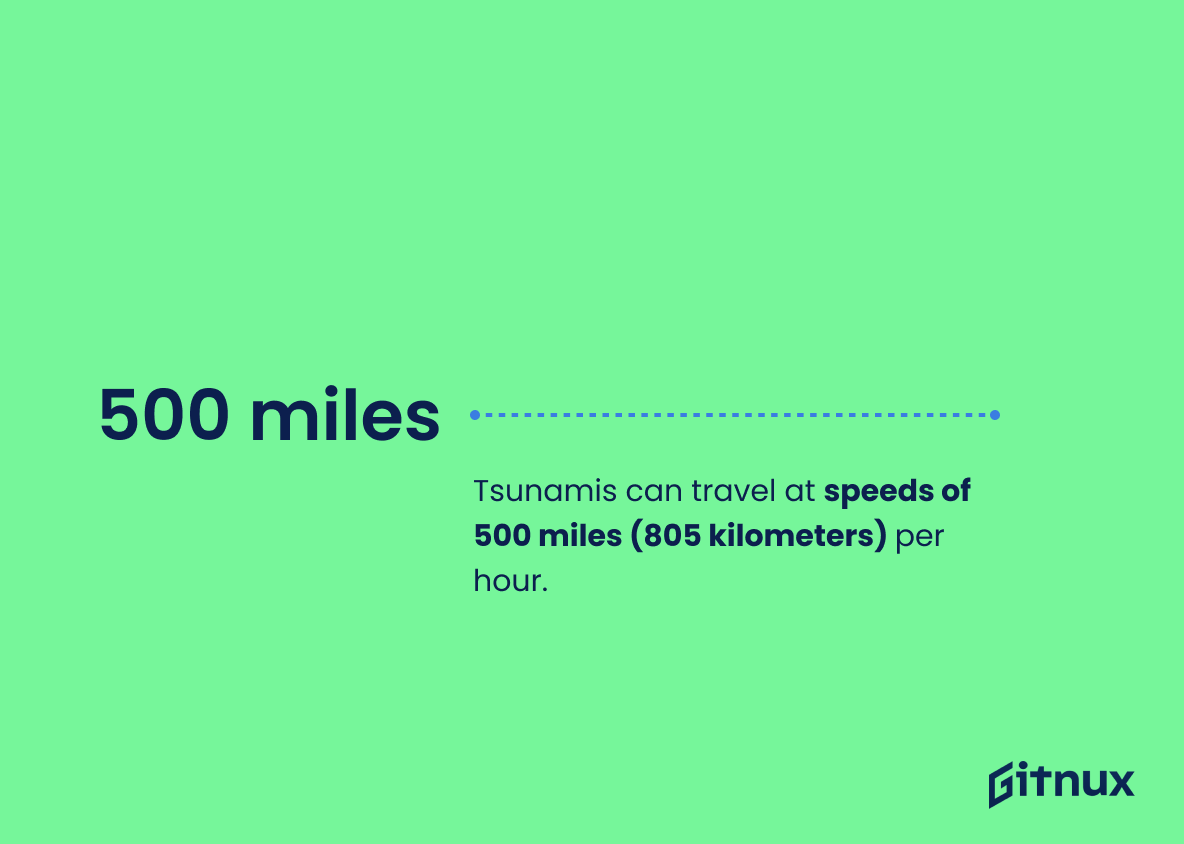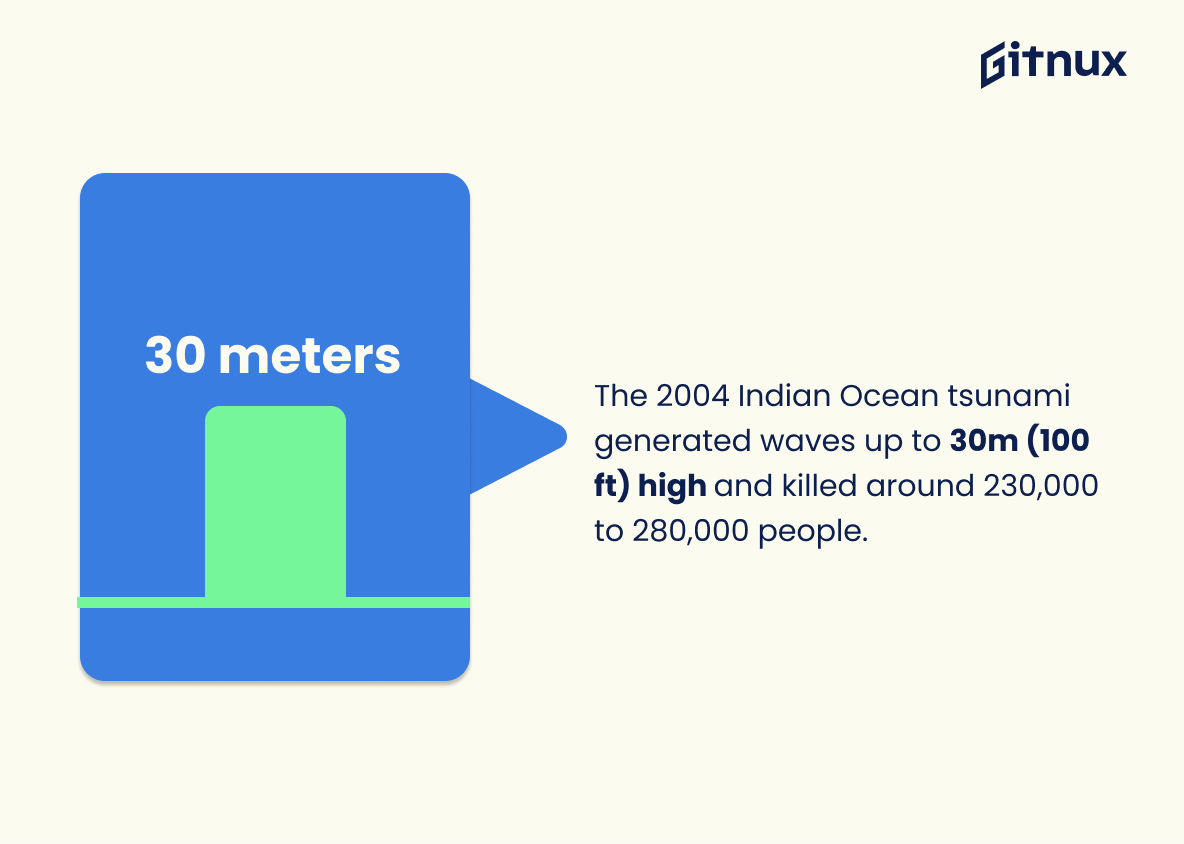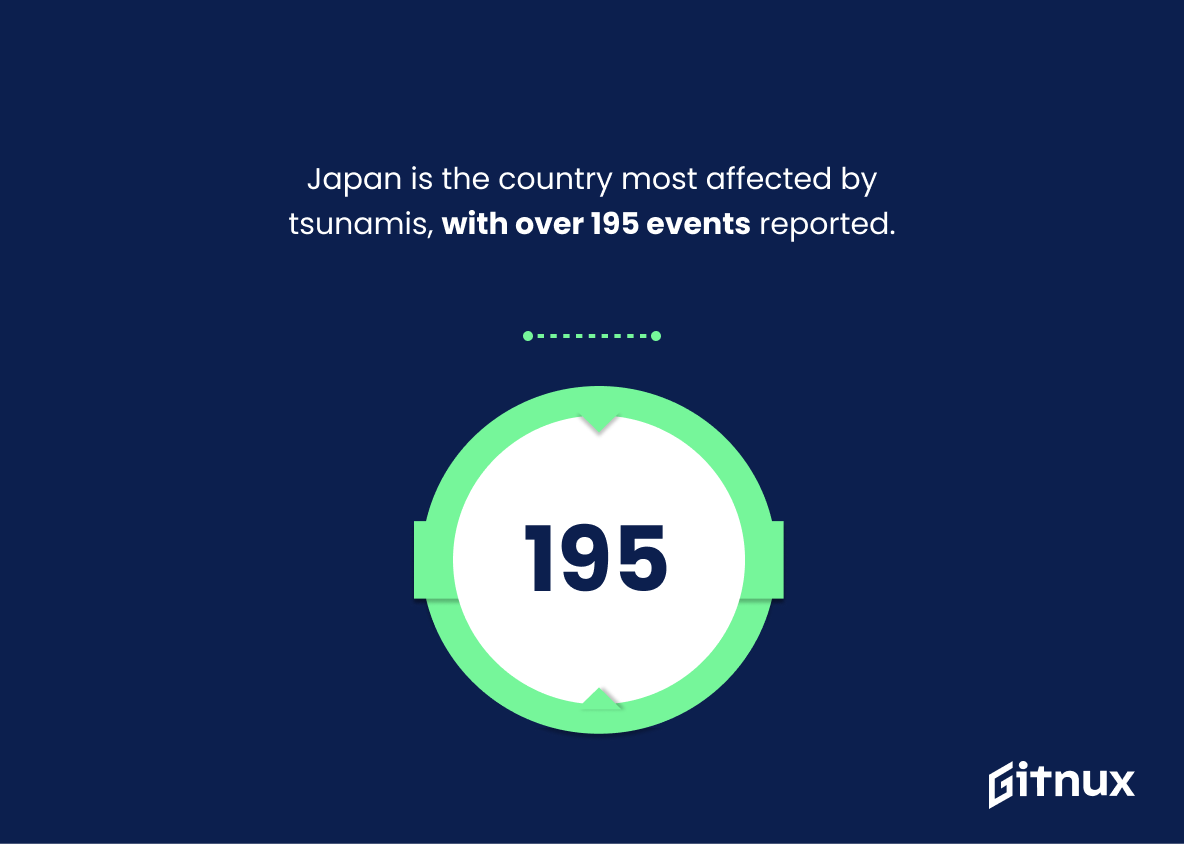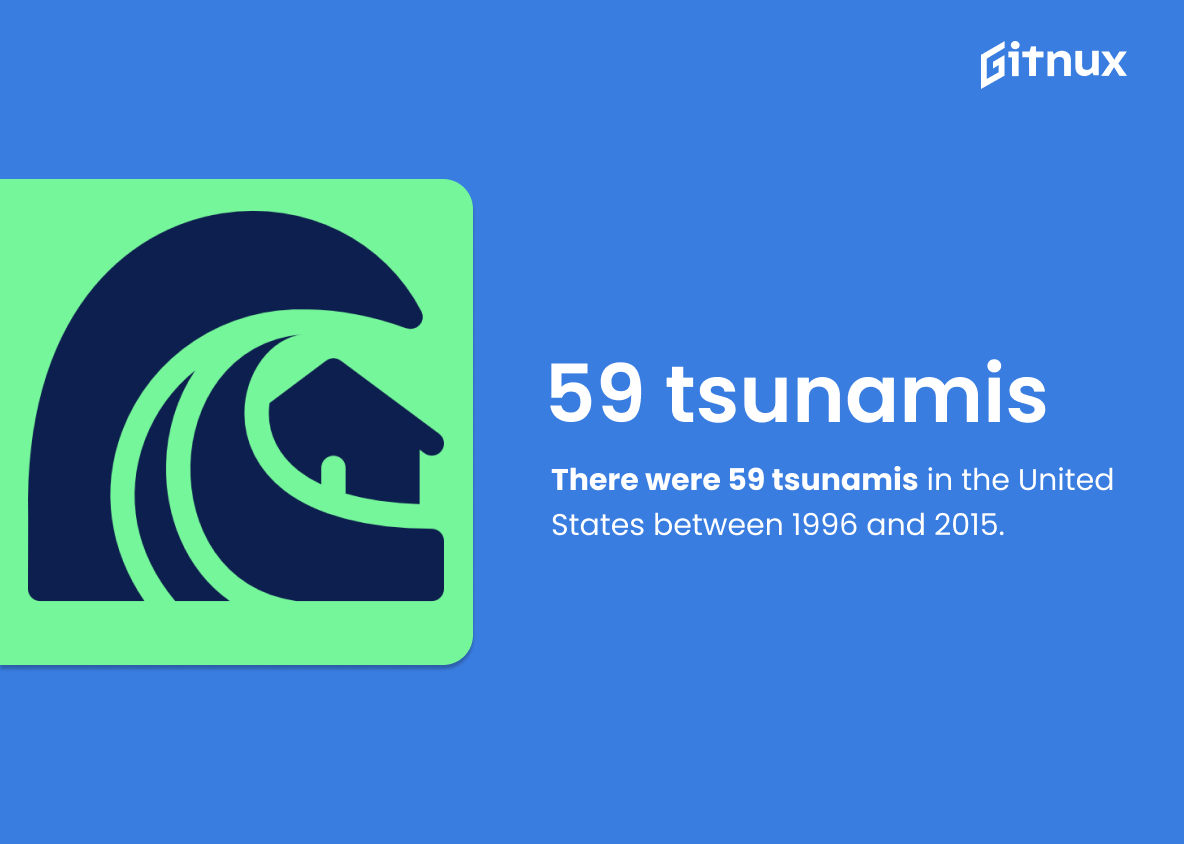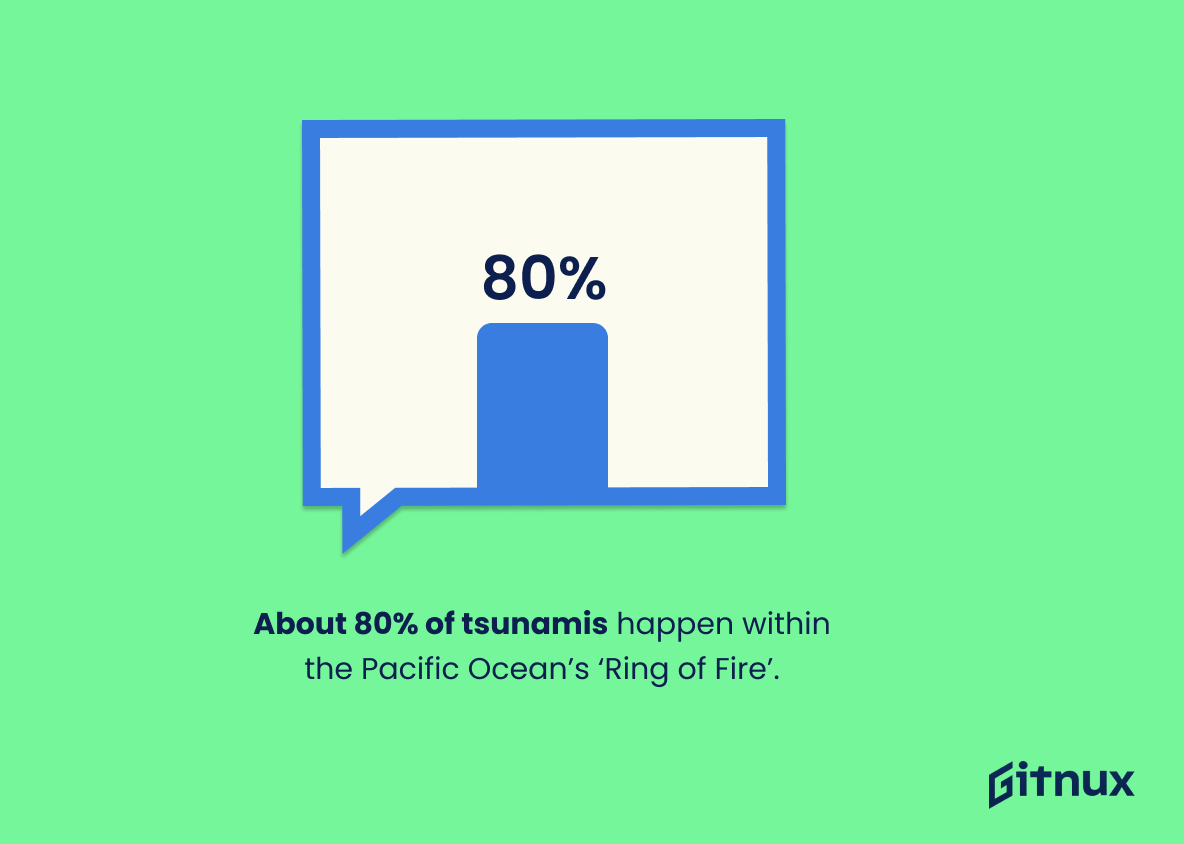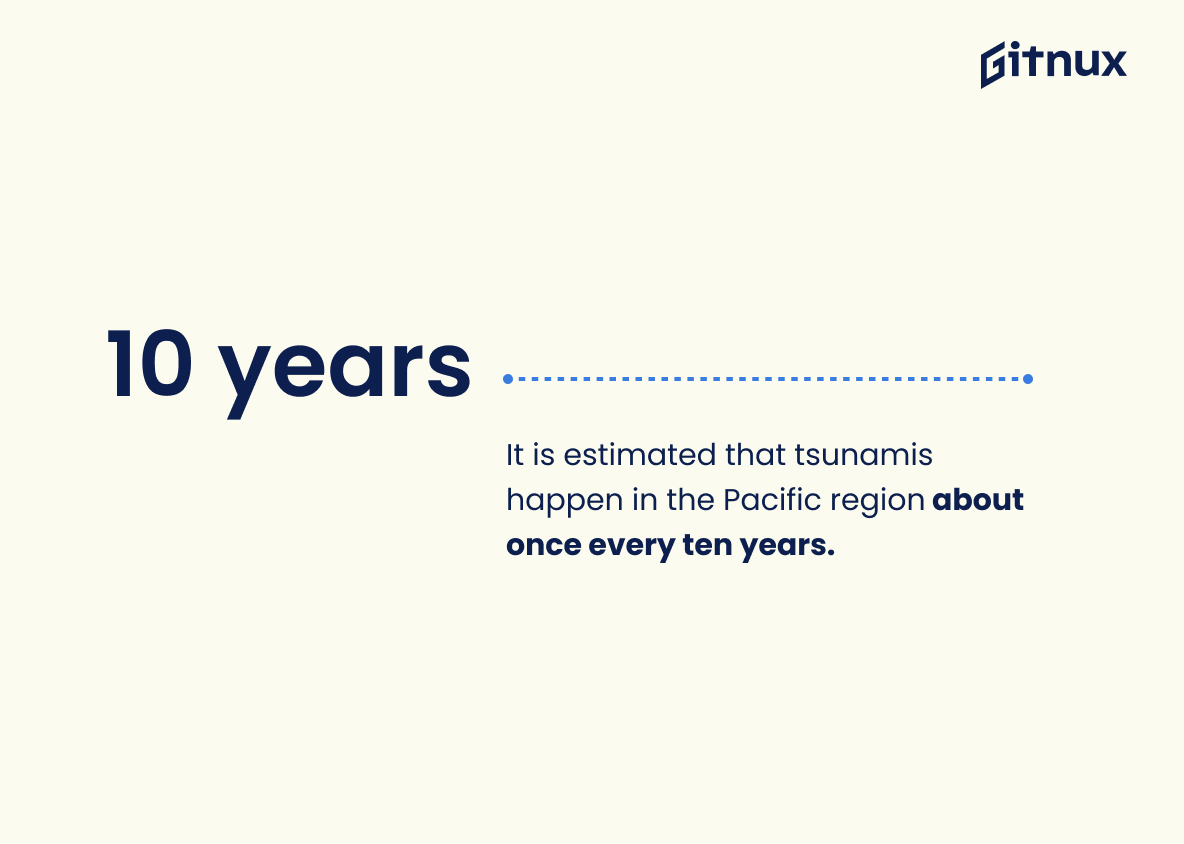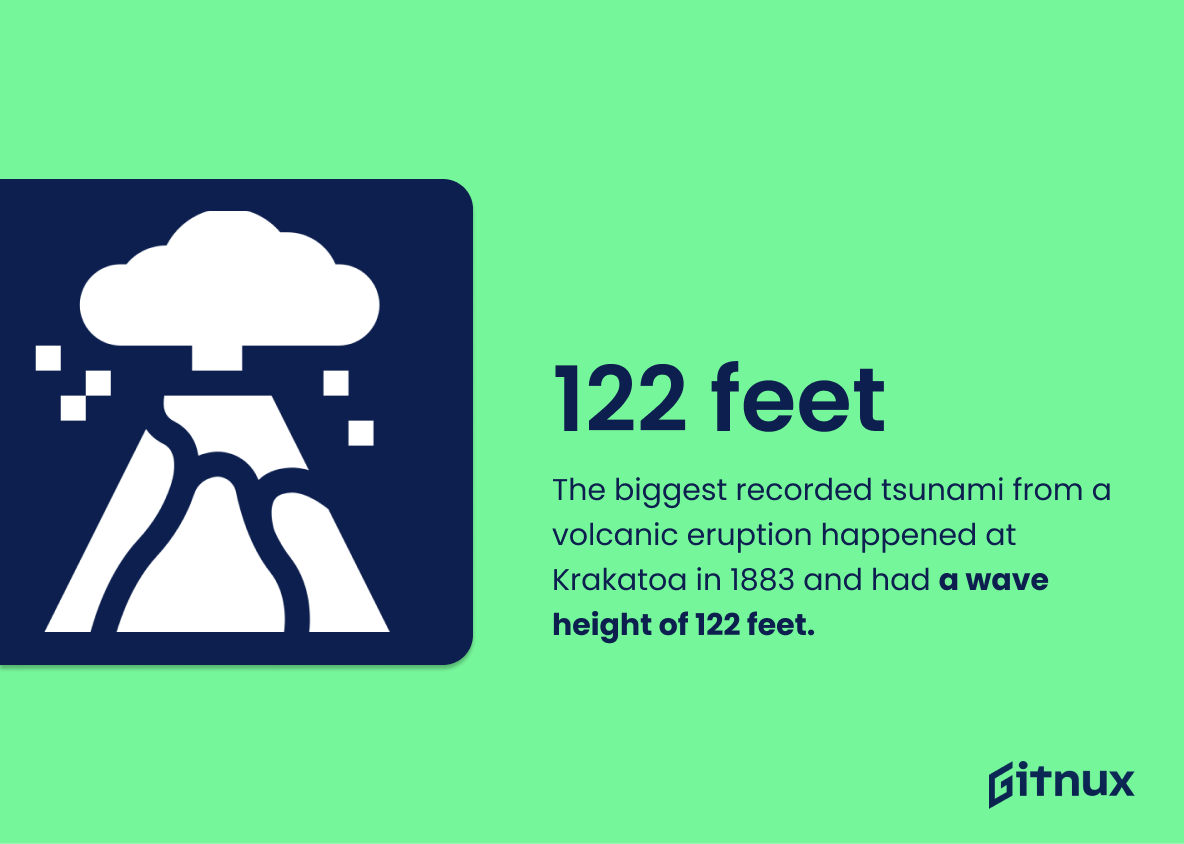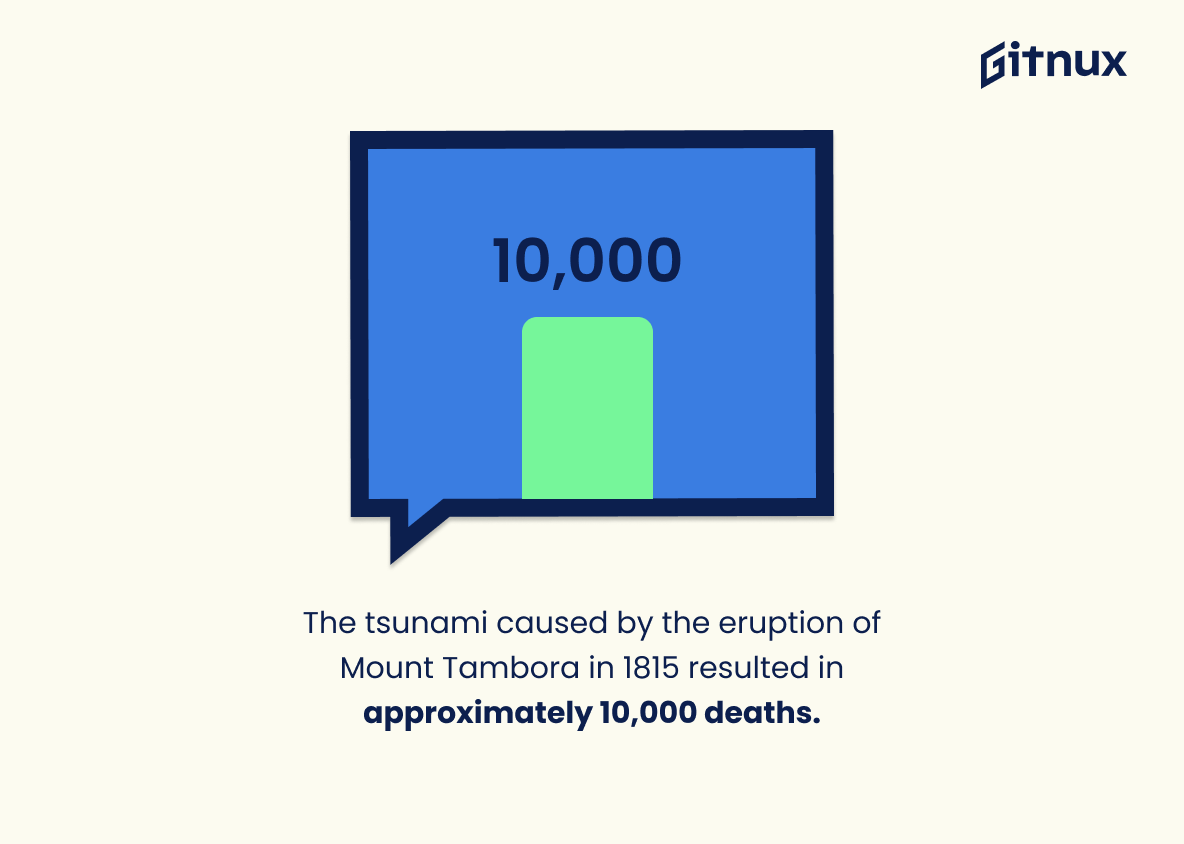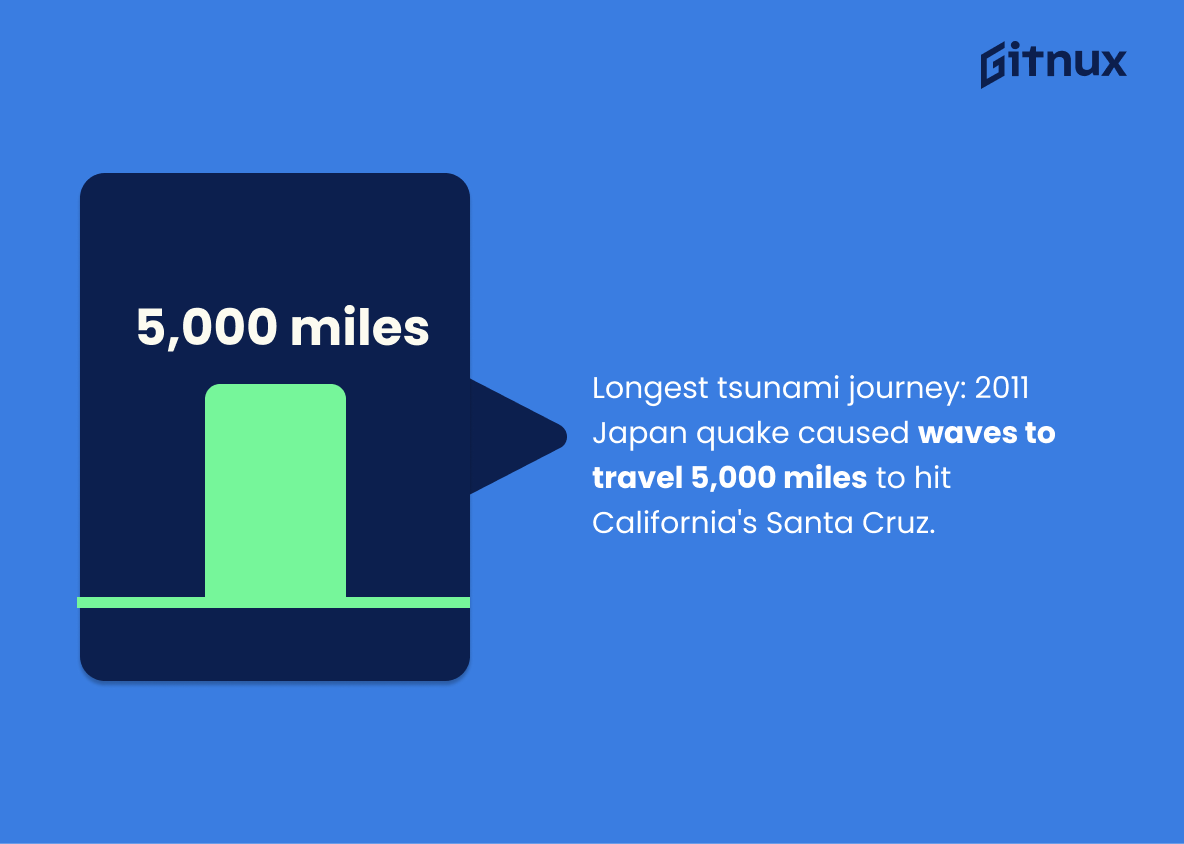Gazing across the vast celestial blue of the ocean, it’s hard to fathom the sheer, unparalleled energy it’s capable of unleashing as a tsunami. The natural phenomenon that has frequently haunted humanity’s coastal communities with sweeping suddenness and devastating impacts. Throughout history, tsunamis have left behind trails of destruction etched deep into the annals of human civilization. By delving into the riveting world of tsunami statistics, we can better understand their frequency, triggers, and controls. This illumination not only satiates our inherent curiosity but also equips us with the knowledge to enhance disaster preparedness and resilience. Join us as we navigate the impressive and often sobering realms of tsunami statistics, exploring the compelling data and trends that underscore the need for continued vigilance and understanding of these potent forces of nature.
The Latest Tsunami Statistics Unveiled
The highest tsunami wave ever recorded was 1720 feet in height, which happened in Lituya Bay, Alaska in 1958.
This towering figure of 1720 feet – the apex of tsunami waves ever recorded – undoubtedly underscores the tremendous power and scale tsunamis can achieve. Situated in the heart of our tsunami statistics blog post, this fact radiates a stark warning of the catastrophic potential these ocean disturbances hold. Not only is it a climatic high point of our blog, illustrating the upper limits of tsunami height in Lituya Bay, Alaska, but it also serves as a compelling yardstick against which other tsunami events can be measured. This startling reality consequently illuminates the urgent need for continued research, education, and preparation in the battle against these devastating natural disasters.
Ninety percent of all tsunamis happen within the Pacific Ocean’s ‘Ring of Fire’.
Highlighting the fact that ‘Ninety percent of all tsunamis occur within the Pacific Ocean’s ‘Ring of Fire” serves as a potent reminder of the powerful interplay between geography and weather patterns. It’s like a warning beacon, flashing bright in the world of tsunami statistics. This tells us where our eyes should be focused; giving critical insights to scientists, government agencies, and disaster preparedness organizations in order to concentrate their efforts and resources accordingly. It further holds a critical relevance for the inhabitants of these regions, triggering increased caution and the need for robust disaster management plans. The sheer dominance of one area in tsunami occurrence is a forceful testament to the vital role this statistical piece holds in designing effective strategies for the prediction, preparation, and mitigation of these potentially catastrophic events.
Tsunamis can travel at speeds of 500 miles (805 kilometers) per hour.
Harnessing the power of insightful observation, this thundering statistic underscores the breath-taking velocity at which tsunamis can unleash their mighty force. The mammoth speed projected – a staggering 500 miles (805 kilometers) per hour – serves as a potent reminder of the extreme rapidity, ruthlessness and unanticipated arrival of these formidable natural events. Within the blog post’s setting, this statistic elevates the discussion around tsunami preparedness and emergency response, underscoring the sheer urgency of contingencies required to mitigate catastrophic consequences. It also paves the way for increased respect and understanding of nature’s awesome power, making the post undeniably riveting and informative.
The 2004 Indian Ocean tsunami generated waves up to 30m (100 ft) high and killed around 230,000 to 280,000 people.
How profoundly the 2004 Indian Ocean tsunami event marked history’s pages is evinced by its astounding and somber parameters. Unleashing waves reaching a staggering 30 meters (100 ft) high, it stamped an indelible impression on our understanding of natural disasters and underpins the gravity encompassed in tsunami statistics. The death toll ranging from 230,000 to 280,000 people, underscores the dire need for preemptive measures, effective alert systems, and in-depth understanding. These figures, more than mere numbers, reverberate through the years; shimmering as a prism reflecting the destructive power of tsunamis, the vulnerabilities of affected regions, and the critical value of investing in comprehensive disaster preparedness and response strategies.
Japan is the country most affected by tsunamis, with over 195 events reported.
Highlighting Japan as the nation bearing the brunt of over 195 tsunami events underscores the geographical vulnerability that some nations face. This potent detail serves as a stark reminder, adding a touch of urgency and gravity to our blog post on Tsunami Statistics. It feeds into extrapolations about disaster management capabilities and instigates discussions about the socio-economic impact on the most affected regions. It adds color to the otherwise monotonous numerical data, turning them into compelling narratives about survivor stories and resilience. Above all, it is a testament to the formidable spirit of Japan, that despite frequent calamities, continues to progress and inspire.
There were 59 tsunamis in the United States between 1996 and 2015.
Plunging into the depth of tsunamis, it’s insightful to realize how America’s coasts experienced a stormy dance with 59 tsunamis between 1996 and 2015. Indeed, this statistic becomes a touchstone to comprehend the frequency, intensity, and impact of these marine giants baying at the shores. Imagine these as 59 trembling moments that etch deep into our collective consciousness, instigating research, mitigation efforts, and policy changes aimed at keeping citizens safe. Thus, these numbers are not mute testimony, but resonating echoes urging us to confront the realities of Mother Nature’s more tumultuous moods.
About 80% of tsunamis happen within the Pacific Ocean’s ‘Ring of Fire’.
Immersing ourselves in the intriguing world of Tsunami statistics, a fact that both startles and awakens us is that nearly 80% of these potent sea monsters select the Pacific Ocean’s ‘Ring of Fire’ as their primary stage. This gargantuan proportion certainly commands our analytical attention. In this geo-ballet of powerful oceanic currents and tectonic pirouettes, understanding why tsunamis favor this fiery ring offers critical insights into disaster planning and risks, potentially empowering us to better predict, prepare for, and even preempt the damage these oceanic behemoths might cause in the future. Infusing the narrative with this statistic illuminates the unseen choreography of these natural phenomena in a way that demands the focused gaze and consideration of all who engage with it.
It is estimated that tsunamis happen in the Pacific region about once every ten years.
In the interplay of numbers and natural events, the statistic that tsunamis occur roughly every ten years in the Pacific region serves as a pivotal point. Such numerical facts become the anchoring pillars for a blog post about Tsunami Statistics. They elucidate frequency patterns, reveal the rhythm of Mother Nature’s grand yet terrifying oceanic symphony, and remind us of the power the Pacific region holds in its depths. These figures arm us with knowledge and allow for more informed decisions when it comes to safety measures, town planning, and even, personal choices related to residing or vacationing in areas with this form of risk. From the perspective of a data aficionado, it emphasizes the poignant role that numbers play in understanding and coping with our natural world.
In the past century, tsunamis have been responsible for the loss of over 260,000 lives.
Honing in on this striking figure – the loss of over 260,000 lives to tsunamis in the past century – one cannot help but stand in awe of the critical significance it holds in our study of tsunamis. This isn’t mere trivia; it is a thundering testament to the sheer destructive power of tsunamis. Our discussions about tsunami statistics would be vastly incomplete without recognizing this grim reality. Remember, every ripple in these figures reverberates in real-world implications – from guiding our disaster risk preparedness to shaping architectural designs, informing insurance policies and even directing national priorities in coastal regions worldwide. Such a number helps us understand the scale and frequency of these events, throwing light on the imperative need to better predict these catastrophes and enhance our readiness to tackle them.
The 2011 Japan tsunami moved the main island of Japan 8 feet and shifted the Earth on its axis.
Plug into the power of numbers and imagine the unimaginable. The 2011 Japan Tsunami wasn’t an ordinary event. It packed such a punch that the entire main island of Japan shifted by a staggering 8 feet, redefining boundaries and transforming geographies momentarily.
Moreover, have you ever thought of someone moving the Earth off its axis? Sounds like something right out of a fantasy novel, doesn’t it? Yet, the Japan Tsunami did just that, demonstrating the terrifying power of nature. Our planet, spinning day in and day out, got nudged from its axis. The minute, but existent shift, gives us a tangible scale of the devastation inflicted by Tsunamis.
So, as we delve deeper into Tsunami statistics, let us not forget to acknowledge these awe-inspiring, yet terrifying facts that lay bare the enormous power and possibly devastating consequences of Tsunamis. They provide valuable context and emphasize the importance of investing in disaster preparedness and early warning systems.
The biggest recorded tsunami from a volcanic eruption happened at Krakatoa in 1883 and had a wave height of 122 feet.
In crafting a comprehensive blog post about Tsunami Statistics, it’s pivotal to shed light on extremes, especially when considering the scope of their impact. The 122-foot wave height caused by the Krakatoa volcanic eruption in 1883 serves as a stark reminder of the immense destructive potential that tsunamis can unleash. This record-breaking water wall not only underscores the necessity for rigorous coastal safeguards and tsunami preparedness measures around volcanic areas but also highlights the significant role that non-seismic factors can play in triggering tsunamis. Portraying such dramatic instances delineates the scale and breadth of tsunami data, enriching our understanding and prompting holistic risk assessment.
The tsunami caused by the eruption of Mount Tambora in 1815 resulted in approximately 10,000 deaths.
The immense power and threat of tsunamis becomes strikingly evident when we gaze back at the 1815 eruption of Mount Tambora. This chilling event unfolded a deadly tsunami, sweeping away close to 10,000 lives. This stark statistic fathoms as more than a mere number. It amplifies the gravity of natural disasters, grounds our understanding of tsunamis and aligns us with insights to improve preparedness and responses. In our odyssey through tsunami statistics, this grim incident serves as a potent reminder of why understanding the potential impact of tsunamis is so crucial.
Seismic sea wave (tsunami) losses for the United States over the 13-year period 1992-2004 were $10 million in damages.
Shining a light on the financial impact of seismic sea waves, the considerable sum of $10 million was spent in rectifying Tsunami caused damages across the United States during a mere 13-year period from 1992 to 2004. Illustrating the substantial economic burden caused by such natural disasters, this figure serves as a poignant reminder to strengthen preventative measures and emergency preparedness plans, while reinforcing the significant importance of continual research in tsunami science. Furthermore, this monetary representation can act as a catalyst for policy changes and insurance strategies, and inspire advances in structural and civil engineering to mitigate future damage costs.
The longest recorded distance a tsunami traveled came after the 2011 Japan earthquake and tsunami. The waves traveled 5,000 miles across the Pacific Ocean to hit the port of Santa Cruz, California.
Highlighting this impressive statistic helps to underscore the sheer power and reach of tsunamis. It illustrates the alarming reality that even geographical distance and vast expanses of ocean offer little barrier to these powerful forces of nature. Emphasizing that, over 5,000 miles away, the tsunami waves generated by the 2011 Japan earthquake still had enough intensity to impact Santa Cruz, California, we reinforce the immense energy behind such events. This fact serves as a potent reminder and compelling rationale for ongoing scientific exploration of Tsunamis, preparedness measures, and warning systems, considering how far-reaching their effects can be.
The second highest tsunami in history was the 1952 Kamchatka Peninsula tsunami, with initial wave heights of up to 210 feet.
In echoing the powerful narratives of Tsunami Statistics, the 1952 Kamchatka Peninsula tsunami, with towering initial wave heights of up to 210 feet, finds a prominent place. This phenomenal instance not only stands as a stark reminder of the raw destructive might of nature but also as an invaluable source to refine our understanding. The grandeur of this particular tsunami event is second only to its fierce informative capacity, granting unprecedented insights into the dynamic behavior of tsunamis as well as aiding the scientific community in fortifying future preparedness and mitigation strategies.
Since 1850, tsunamis have been responsible for the loss of over 420,000 lives.
By unfolding the dismal tapestry of history that has witnessed over 420,000 lives embraced by the ocean’s wrath since 1850, this statistic serves as a stark reminder of the magnitude of devastation that tsunamis can cause. It stitches a tangible image of the potential consequences and delivers a wake-up call to both authorities and coastal inhabitants about understanding, preparing for, and mitigating tsunami risks. Therefore, it’s a critical centerpiece in a blog post about tsunami statistics, adding depth to the narrative, fostering awareness, and underlining the urgency for preemptive actions and effective disaster management systems.
Over the past 100 years, 58 tsunamis have caused the loss of more than 260,000 lives.
The undeniable magnitude of such a statistic delivers a somber wake-up call to all. Revealing the harsh reality of over 260,000 lives lost to 58 tsunamis in the past century, it makes a compelling appeal to our shared humanity. It paints an alarming portrait of the sheer power of nature and serves as a startling reminder of the need for adequate disaster preparedness. This statistic assists in fostering a greater understanding of the real-world effects of tsunamis, thus enriching the context of any discussion on Tsunami Statistics. Distilling a century of history into a single figure, these numbers bear the weight of untold stories, echoing the urgency for effective safety measures and policies to safeguard future generations from similar tragic loss.
The 2009 Samoa earthquake and tsunami resulted in 189 fatalities and economic losses estimated at $147 million.
The 2009 Samoa earthquake and tsunami statistic paints a haunting picture, rapidly casting a shadow over any discussion on tsunami statistics. It serves as a stern reminder of the crushing force that nature can exert without notice, with fatal repercussions for human life and cataclysmic impacts on regional economies. The figure of 189 fatalities brings the harsh and immediate human cost into relief, while the $147 million in losses underscores the long-lasting economic blows that extend well beyond the immediate aftermath. This statistic plays a vital role in underlining the devastating dual impact of such a disaster, constituting an unforgettable reference point in any comprehensive discourse focusing on tsunami statistics.
The 1998 Papua New Guinea tsunami resulted in the loss of approximately 2,200 lives.
In the grand narrative of Tsunami Statistics, one cannot turn a blind eye to the 1998 Papua New Guinea tsunami – a horrifyingly stark reminder of the enormous human cost tsunamis can impose. With approximately 2,200 lives swallowed by the violent waves, the event underlines the seismic threat that tsunami poses to coastal regions. This drastic death toll contributes significantly to our understanding of the deadly power and potential impact tsunamis hold, allowing us to further raise awareness, shape preventative measures, and improve disaster response strategies.
Over 50% of the world’s active volcanoes above sea level are part of the Ring of Fire.
Taking into account that more than half of the world’s active volcanoes above sea level are concentrated within the Ring of Fire allows us to grasp the magnitude of Tsunami-related risks. Tsunamis are often triggered by seismic activity, including volcanic eruptions, and this geographic detail paints a clear picture of potential danger zones. Analyzing these numbers can lead to more effective preventive strategies and early warning systems in the most tsunami-prone regions, shielding coastal communities from catastrophic waves. This statistic gives you a sense of urgency, as good as a shadow swiftly creeping, indicating a storm is about to strike. With over half of our active, above-sea-level volcanoes sitting on the Ring of Fire, it’s a clear sign, we ought to be prepared.
Conclusion
Understanding tsunami statistics is more than just crunching numbers, it’s a sobering reminder of the sheer power unleashed by natural disasters. The figures underscore the vulnerability of coastal communities to these unpredictable events and emphasize the need for increased education and preparedness. By studying these statistics, researchers and policymakers can better predict and prepare for future tsunamis, helping to mitigate damage and potentially save lives. Given the rapidly changing nature of our climate, such data is critical in managing and mitigating risks associated with these catastrophic events. Ultimately, tsunami statistics give us a bearing on past events to shape future resiliency, serving as a stark reminder that Nature’s fury, while daunting, can be prepared for and understood.
References
0. – https://www.www.vox.com
1. – https://www.www.tsunami.gov
2. – https://www.www.worldatlas.com
3. – https://www.www.usgs.gov
4. – https://www.www.iii.org
5. – https://www.www.livescience.com
6. – https://www.www.theworldcounts.com
7. – https://www.www.encyclopedia.com
8. – https://www.www.nationalgeographic.org
9. – https://www.www.ncdc.noaa.gov
10. – https://www.www.tsunamizone.org
11. – https://www.www.ngdc.noaa.gov
12. – https://www.www.britannica.com
13. – https://www.nctsn.org
14. – https://www.earthobservatory.nasa.gov
15. – https://www.www.nationalgeographic.com
16. – https://www.www.gdacs.org
17. – https://www.oceanservice.noaa.gov
18. – https://www.public.wmo.int


